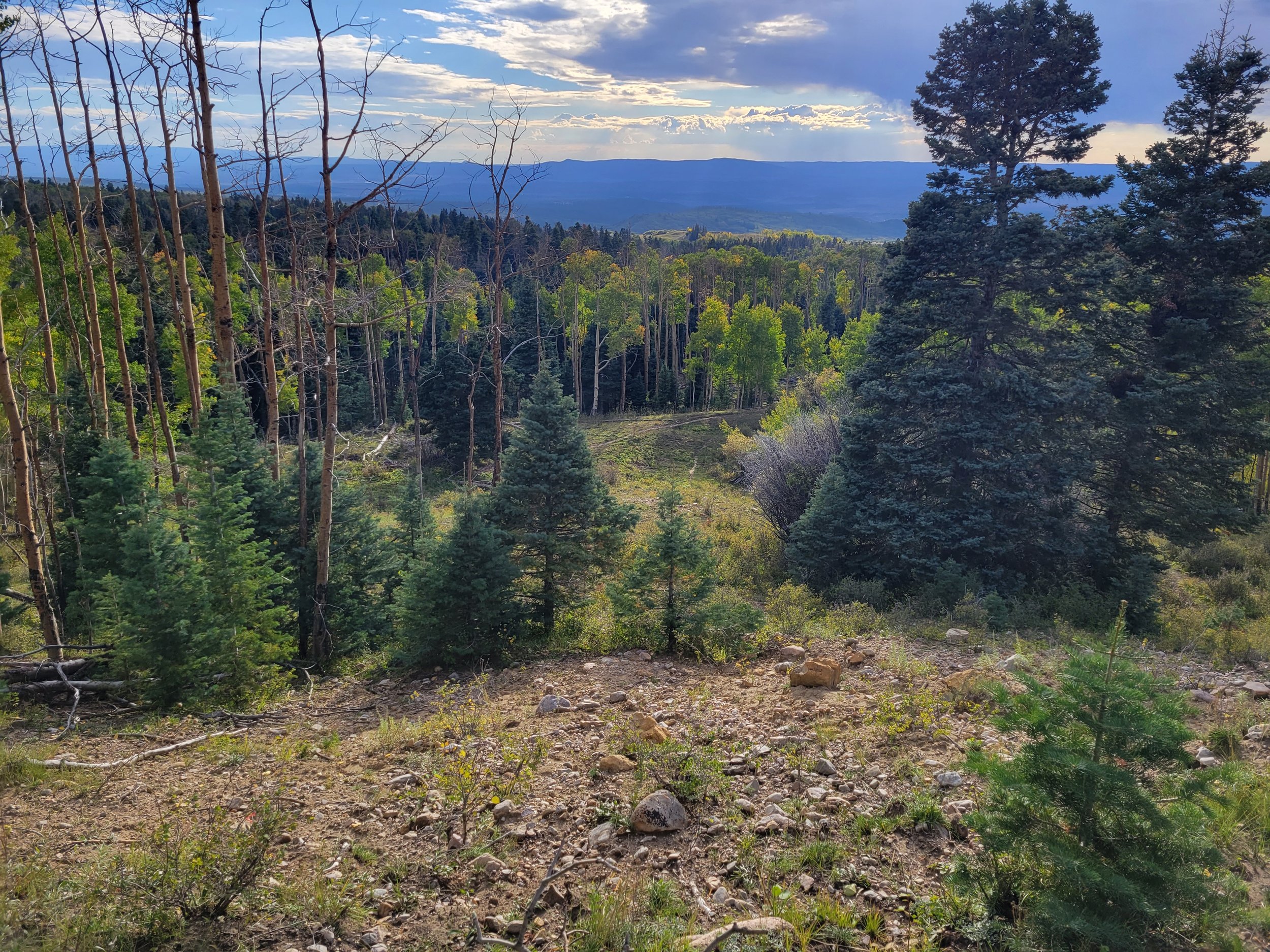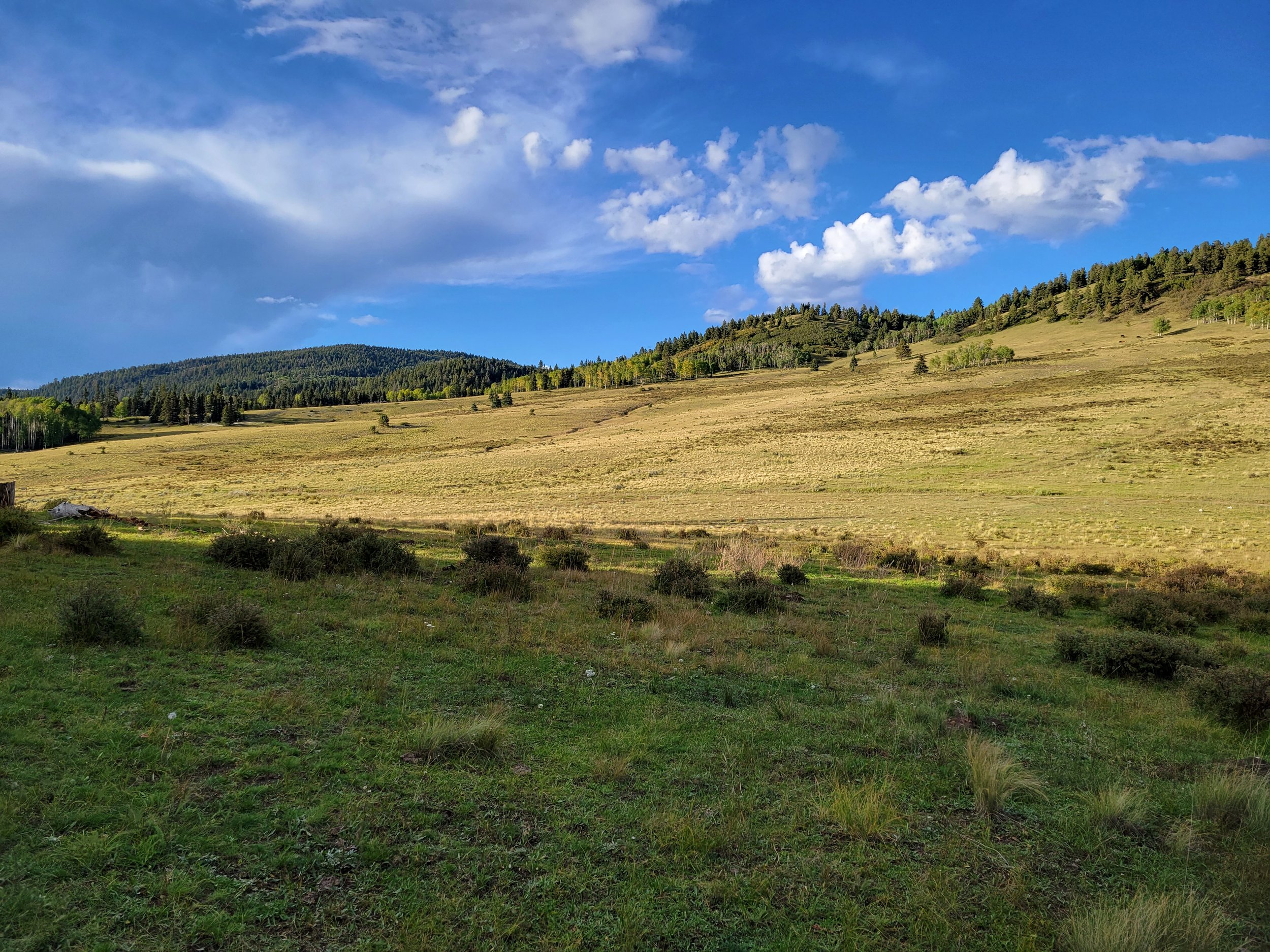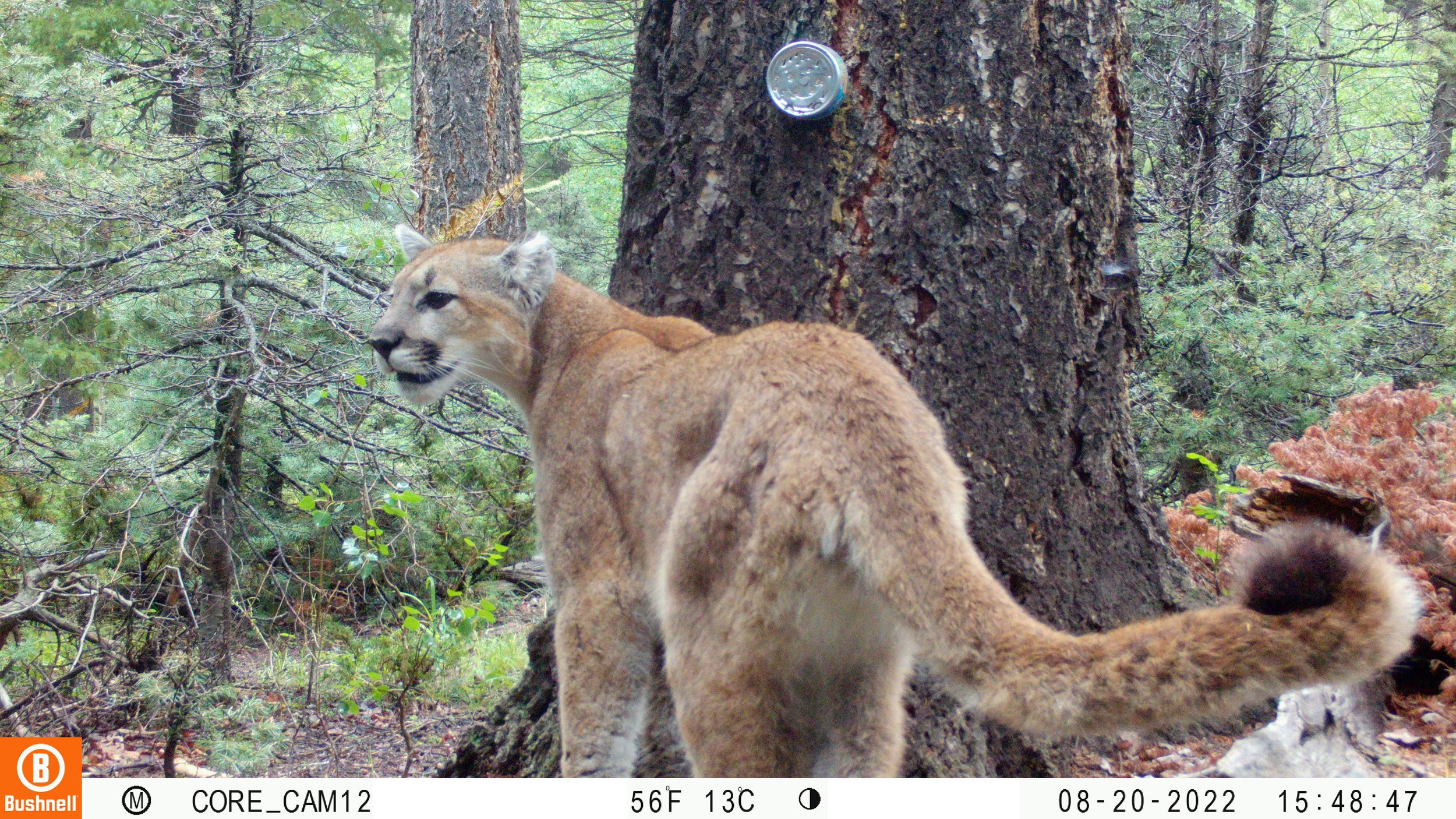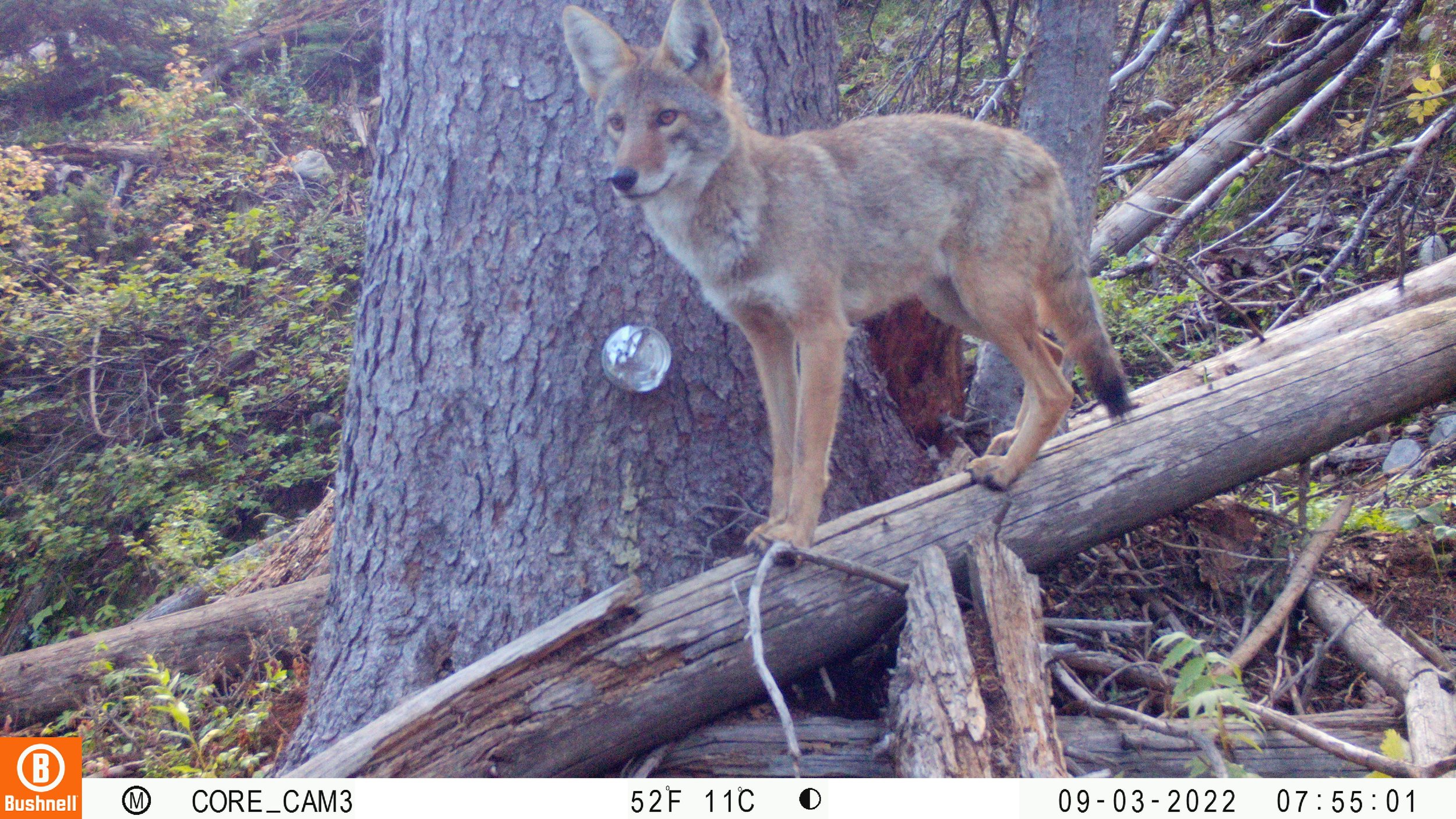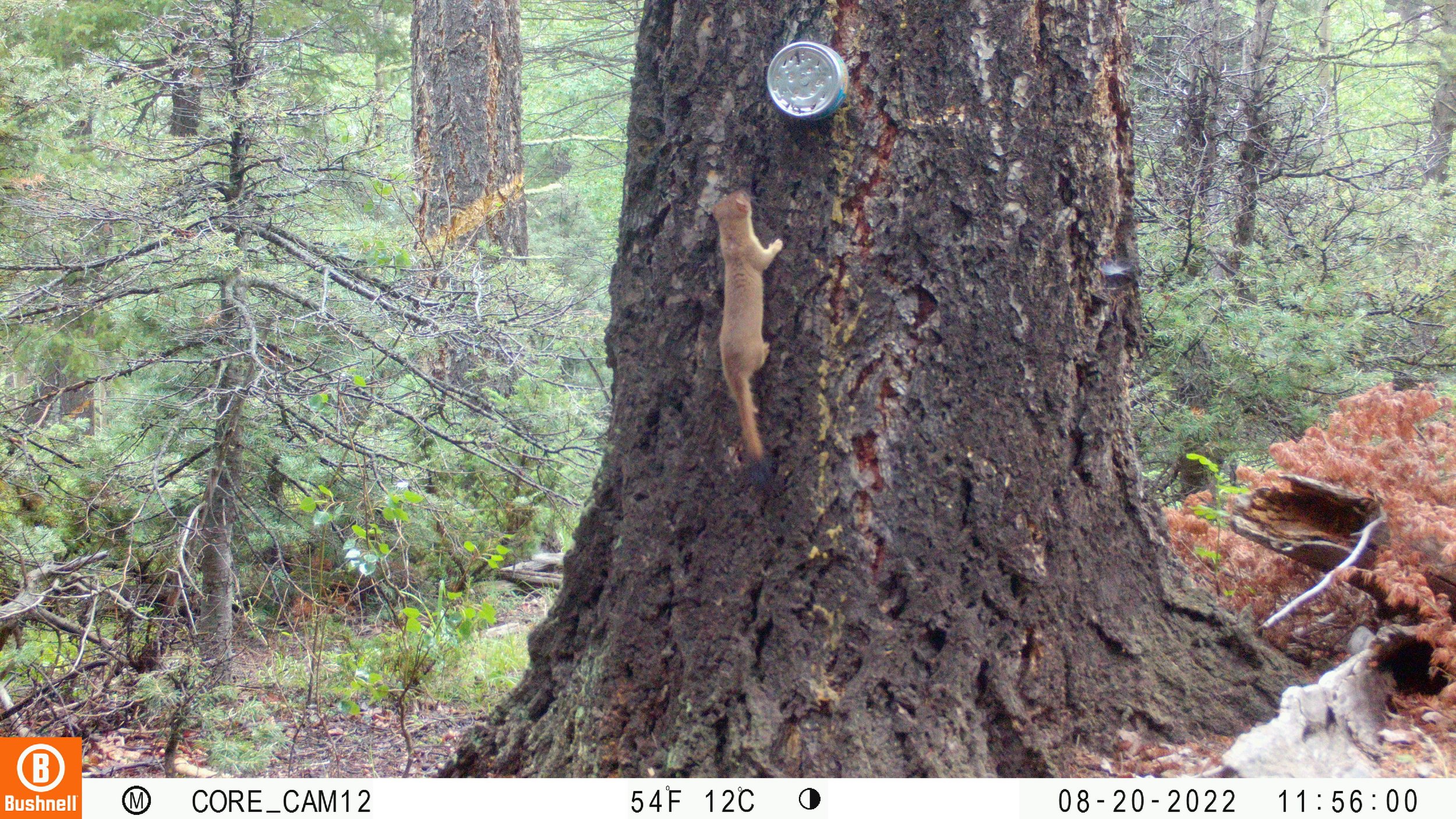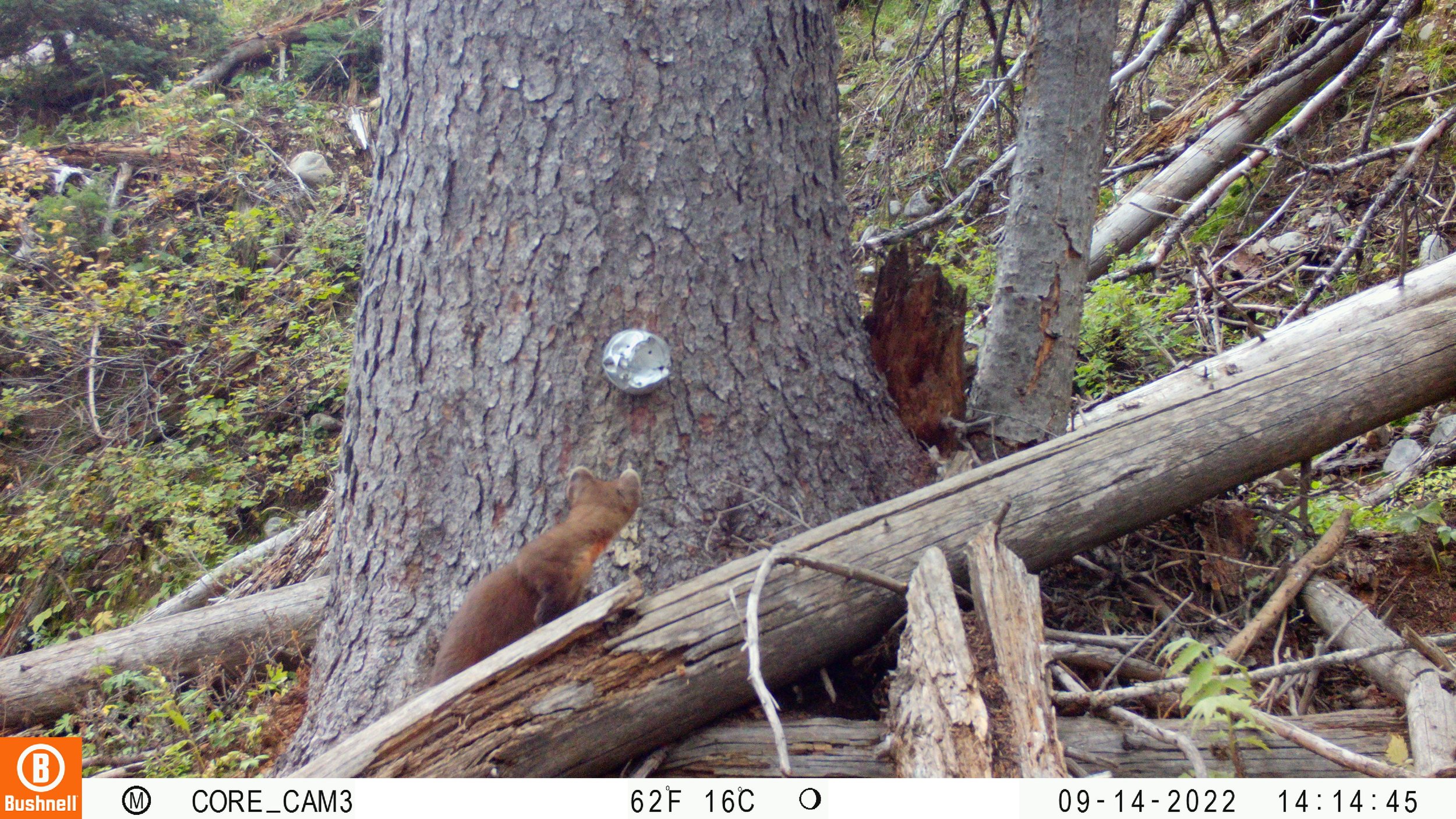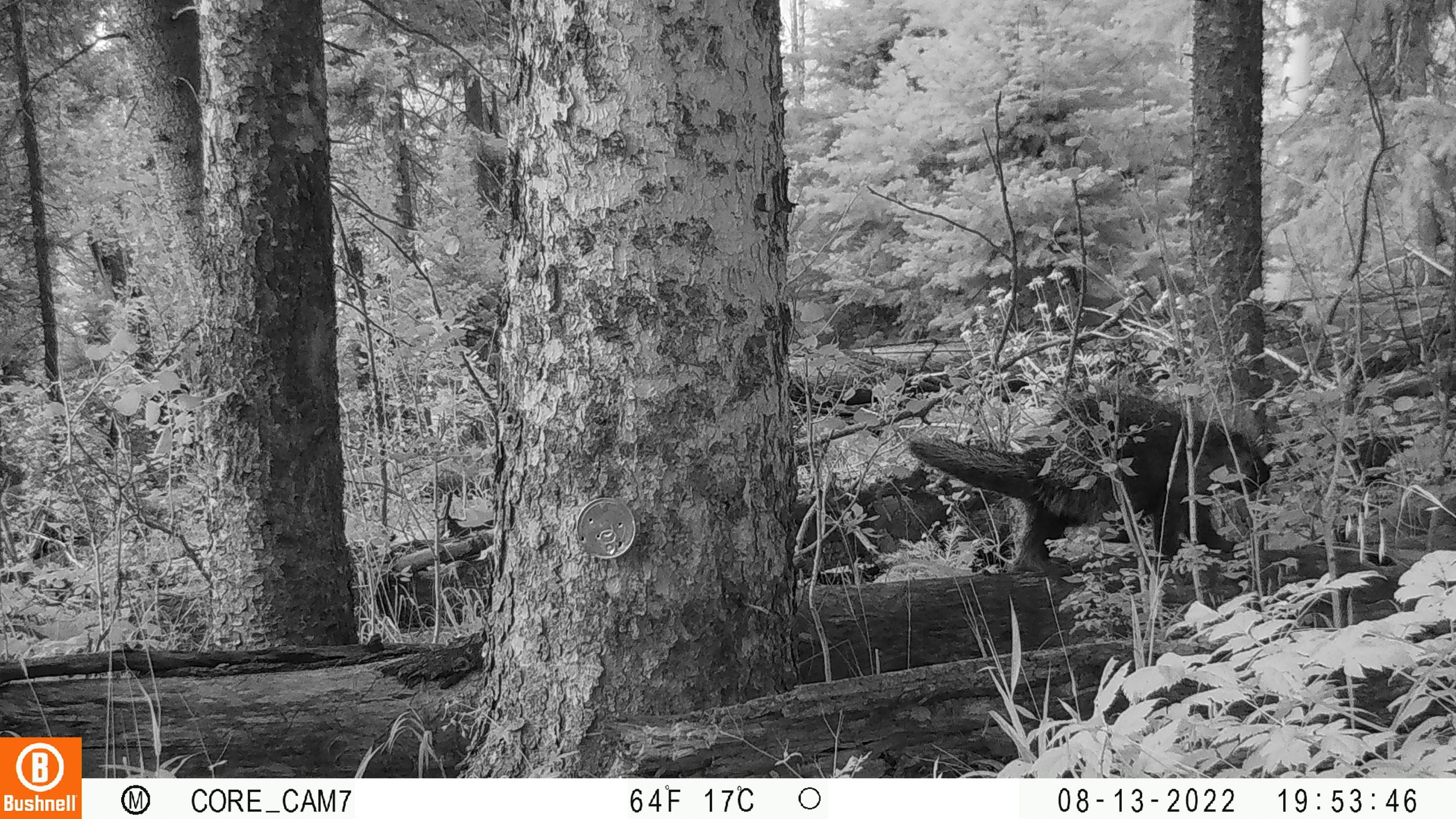Studying rare carnivores in northern New Mexico
Wildlands Network and partners launch study to determine presence and distribution of Pacific marten and Canada Lynx
The south San Juan Mountains of northern New Mexico are a hidden gem, with mountain streams through deep canyons, sprawling meadows and dense conifer forests. This striking landscape hosts migration corridors for elk and deer, one of the highest elevation pronghorn populations, and the imperiled Rio Grande cutthroat trout.
Various landscapes seen throughout the Carson National Forest. Photos: Aaron Facka
The region also represents the southernmost extent of the range for Pacific marten (Martes caurina) and Canada lynx (Lynx canadensis). These species prosper in mature forests at high elevations. Despite being occasionally observed in this area, the extent and status of their current populations in the region remain unknown. To better illuminate their status and distribution across the landscape, Wildlands Network, in partnership with Defenders of Wildlife, launched a remote trail camera study this fall to understand their presence within this unique landscape.
Informed by a habitat model that Wildlands Network developed, the team placed more than 40 cameras in potential habitat throughout the region. We used scent lure cans of cat food to attract animals to the camera sites, which will increase the chances that we will capture one of these elusive critters. After the first five weeks of the project, our cameras captured more than 58,000 photos of bears, mountain lions, bobcats, coyotes, fox, skunks, porcupines, badgers, snowshoe hare, elk, deer, and at least one Pacific marten.
Various species captured via camera trap. Photos: Wildlands Network/Defenders of Wildlife
The cameras will remain deployed into the late fall at which point we’ll collect them to conduct a first round of analysis. This will help refine future camera studies and inform other potential next steps, such as hair snagging and DNA testing or management actions that could improve habitat or increase connectivity with populations further north in Colorado.
Canada lynx have been listed as threatened under the Endangered Species Act since 2000 with areas of critical habitat extending into northern New Mexico and overlapping with the study area. While martens are not federally protected, New Mexico Department of Game and Fish lists them as a Species of Greatest Conservation Need in New Mexico.
An elk licking a scent lure can. Video: Wildlands Network/Defenders of Wildlife
For both species, their presence in and ability to occupy their historic habitat indicates the degree to which their populations remain resilient and connected. That means that in order to maintain connectivity and ensure their ability to move across their range long-term, we must first understand the current status of their populations before understanding what actions are needed to maintain or improve connectivity.
Stay tuned for more updates as this study continues!
*This blog was co-authored by Michael Dax and Aaron Facka.


